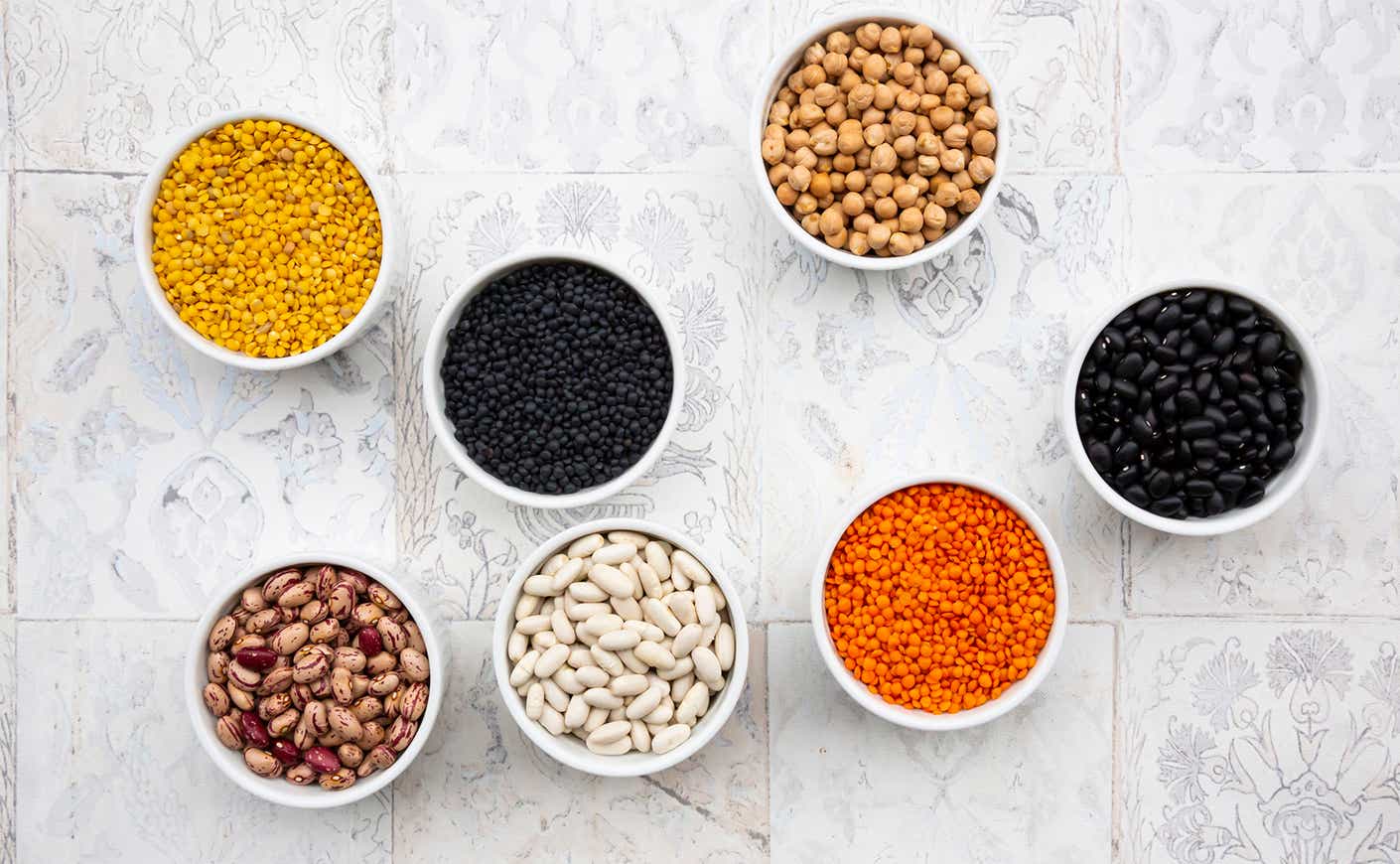Even before we entered this period of self-isolation — which, for many of us, resulted in stocking up on essentials — beans were having a moment. In fact, bean consumption increased by 73 percent over the last five years.
So… what’s the deal with beans? Why were they popular in the before — and why are we so into them now? Well, for starters, they store well and are filled with protein and other nutrients. Here, one of our go-to health experts Dr. Mark Hyman, author of The Pegan Diet, breaks it all down.
Katie Couric Media: First things first, can you help us feel better about our bean intake… why are they so beneficial?
Dr. Mark Hyman: Beans pack a lot of nutrients, including potassium, zinc, iron, magnesium, folate, and vitamin B6, among others. They deliver as much as one-quarter of their weight in protein and contain a healthy dose of fiber, which is good for gut bacteria and keeps us regular. According to my friend, Dan Buettner, Blue Zone communities eat four times the amount of beans that Americans do. If you’re not familiar with the blue zones, they are regions of the world where people live longer than average. So beans can be a really beneficial part of your diet.
There are so many different types of beans. What are the most nutritious types? Are there any big differences in terms of nutrition?
There’s one particular bean that might reign superior over the rest. My friend Dr. Carrie Diulus is a type 1 diabetic, and she is vegan, and she follows a ketogenic diet. I know it sounds impossible, but she is thriving. One of the beans she incorporates in her diet is lupini beans, which are nutritional powerhouses high in fiber and protein, and that have zero net carbs because the starch in this bean is indigestible. That means you can eat them without experiencing the blood sugar spikes. If you want to enjoy beans and are adhering to a low-carb diet, lupini is your friend. Other low-starch beans and legumes include peas and lentils. Some beans like lima beans, kidney beans, and baked beans are super high in starch.
When it comes to cooking, what do you think are the best types of beans to cook with? Do you have any personal favorites?
I probably cook with beans 1–2 times a week. Some of my favorites include lentils, mung beans, and non-GMO, organic traditional soybean-based foods like tofu and tempeh. There are so many delicious recipes online. Lentils and mung beans are probably my favorite to cook with because I love Indian food. Google recipes for things like dal and kitchari. Super delicious.
This is a topic of much debate on Twitter: Should you soak your beans before cooking them?
Yes, I recommend soaking your beans before cooking them. Beans contain lectins and phytic acid which can be really problematic for digestion if someone has gut imbalances. When you soak nuts and seeds, you reduce the amount of lectins and phytic acid and increase your body’s ability to process and assimilate these foods. The ideal way to cook beans (and the fastest) is in a pressure cooker which breaks down most of the components in beans that make them hard to digest.
Many people are making brownies and baked goods with beans — is that a healthy addition to a baked good? Do they add nutritional value?
Beans are great alternatives to regular processed and refined flour. However, if you’re adding 2 cups of sugar to beans, you’re still consuming sugar which is inflammatory. Try using monk fruit or a little bit of honey or maple syrup instead of white sugar.
Lastly, how long do canned beans actually last?
Check the expiration date on the can. Unopened ones can last up to a year sometimes. Opened ones need to be used within 3–4 days. Look for cans that are BPA-free.
Follow Dr. Mark Hyman on Instagram, Twitter, and Facebook, and check out his books on Amazon or your local books retailer.
This originally appeared on Medium.com









